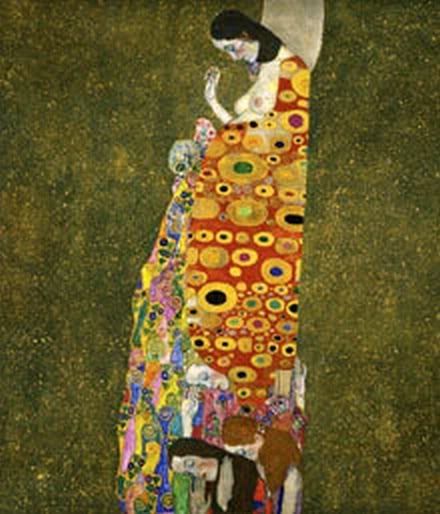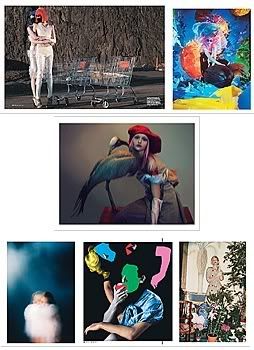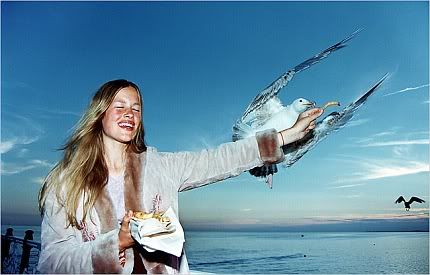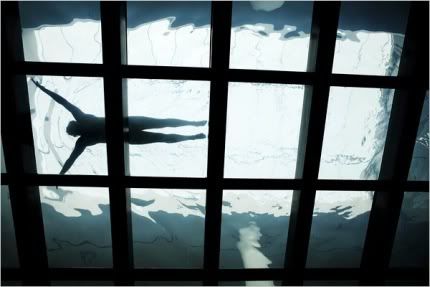Gustav Klimt. Amante de Mujeres
 From The Economist print edition |
| Nov 15th 2007 | NEW YORK Gustav Klimt A lover of women Money and sex bolster the new fascination with Klimt's paintings. |
 |
| The Museum of Modern Art. New York. Hope waiting by the studio door |
WHY is Gustav Klimt, an Austrian artist who lived between 1862 and 1918, so popular? Even before its November 12th publication date in America, both the English and the German editions of the five-kilo (11lb) Klimt catalogue raisonné by Alfred Weidinger (Prestel) had sold out. And 6,000 visitors had crowded into the first week of the Klimt exhibition at New York's Neue Galerie, running from October 12th to June 30th 2008. A spokesman suggests that Klimt may be the gallery's most successful show since it opened in 2001, outstripping even Vincent van Gogh. For this there is a precedent of a kind: in the psychedelic 1960s, van Gogh's "Sunflowers" lost out to Klimt's "The Kiss" as a favourite poster in America's college dormitories. In 1897 Klimt was one of a group of artists wanting to break free of the stuffy, constricted Old Vienna that had formed them. They established "the Secession" (stylistically allied with art nouveau). Soon everything from fashions to furniture changed as the New Vienna took shape. Klimt was the first president of the Secession and led the way sartorially too; he favoured long, voluminous indigo smocks with embroidered white epaulets. The only surviving example hangs in the exhibition, displayed rather pretentiously at the end of a narrow room with its sleeves straight out from the shoulders, cross-like. In his lifetime and after, Klimt was acclaimedin Vienna. In America and Britain there was little interest in German or Austrian art until well after the second world war. Klimt's appeal to hippies, and a revival of interest in art nouveau, marked the beginning of increased awareness. Much more recently he has become an international art-world star. This is partly because of the attention given to the restitution battles over his work and the prices paid for those restituted. In 2006, after years of litigation, five paintings by Klimt once owned by Ferdinand and Adele Bloch-Bauer, two Austrian-Jewish collectors who were the painter's contemporaries, were returned to their heirs by Vienna's Belvedere museum. A sixth, still in the museum, continues to be sought by some family members. Ronald Lauder, a founder of the Neue Galerie, was actively engaged with restitution issues for more than 20 years, advising the family as they pursued their claim. When they succeeded, Mr Lauder bought "Adele Bloch-Bauer I" for a reported $135m. But these days it is "Blooming Meadow", which Leonard Lauder, Ronald's older brother, bought in 1983, that is in the news. Georges Jorisch, grandson of Amalie Redlich, a Viennese Jew, claims that the picture was looted from her collection after the Nazis transported her to Poland in 1941 where she is presumed to have died. The new catalogue raisonné supports this claim; Leonard Lauder steadfastly rejects it, saying he has evidence proving his legitimate ownership. Klimt was a painter of shimmering landscapes and three of them are among the eight paintings in the Neue Galerie show. But sex is at the core of his work: women were his preoccupation. The antechamber to the artist's studio is recreated in the exhibition. Along its far wall, next to the studio doors, is "Hope II", pregnant with breasts exposed. Klimt never had his own home: he lived with his mother and two sisters. Nevertheless, he was a womaniser with uncalculated conquests and seven known children. No wonder Vienna buzzed with gossip about what, besides painting, went on in the studio beyond. Yet among all the photographs of the rather pudding-faced artist in the exhibition, not one captures what made him such a lady-killer. More than 120 drawings are on view, almost all of them women, including nude lesbian couples and women apparently masturbating. But it was the portraits of society women that made his fortune. Many were commissioned by their very rich husbands, some of whom including, it is said, Ferdinand Bloch-Bauerwere cuckolded in the process. In 1903 the artist visited Ravenna, in Italy, where he was struck by the sixth-century Byzantine mosaic interior of the basilica of San Vitale. The glinting gold glass tiles embedded with precious and semi-precious gems must have seemed like a preview of heaven's glory to the parishioners. The Klimt portraits influenced by San Vitale look more like previews of the glories of sex. Among these, the most famous, since her restitution, is "Adele Bloch-Bauer I". The sitter's face emerges from a gorgeous, swirling, gold-painted mosaic. She is both a beauty and a seductress. But in a photograph of her taken three years later, Mrs Bloch-Bauer seems neither beautiful nor sexy. Maybe the affair, if there was one, was over by then; it certainly must have been by 1912 when Klimt painted "Adele Bloch-Bauer II" which packs none of the first portrait's wallop. The first Adele continues to glitter and seduce. Once Ronald Lauder became owner of the painting, it went to the Neue Galerie on long-term loan. As soon as it arrived, visitor numbers shot up by 25%. |
Open at Web Site |
Copyright © The Economist Newspaper Limited 2007. All rights reserved. |








